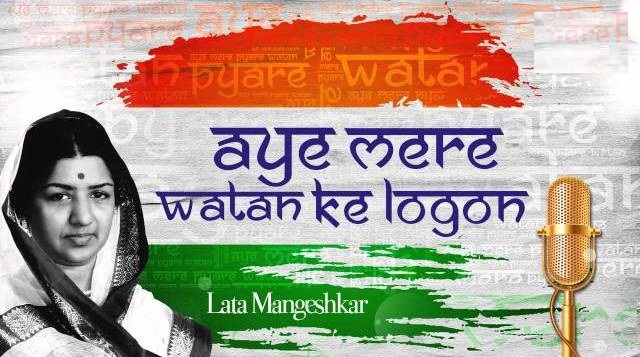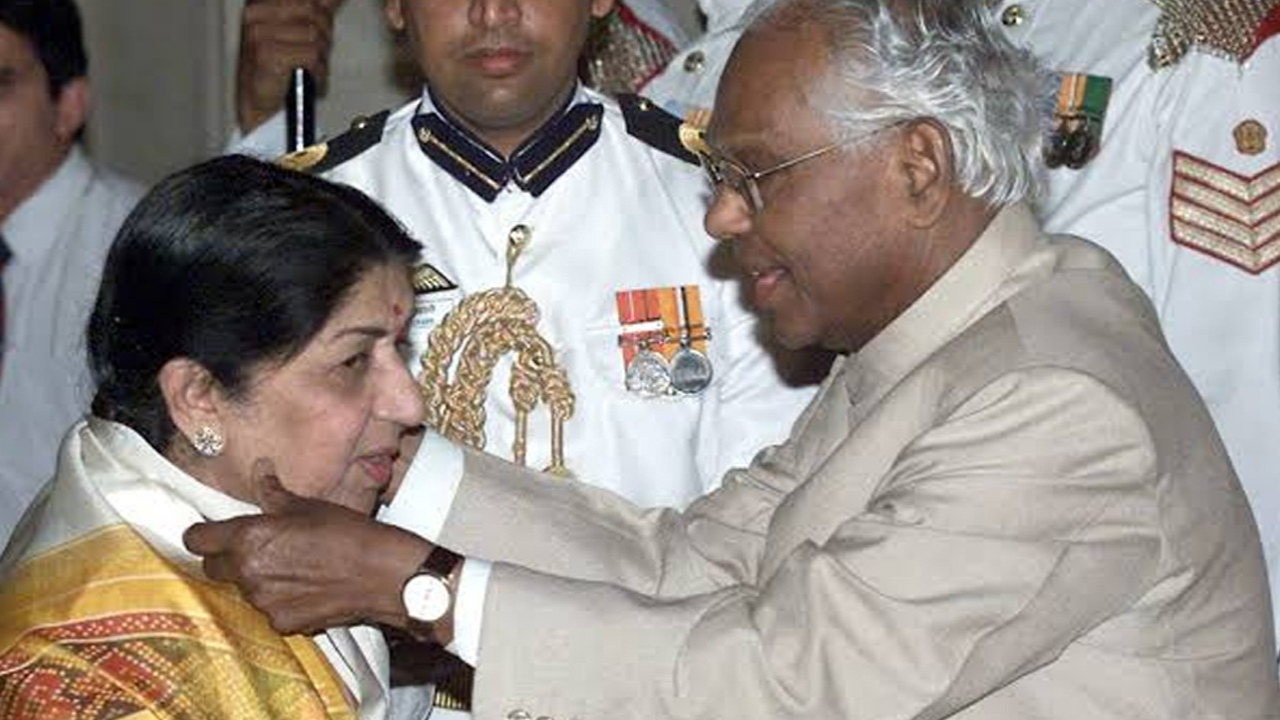The body – the substance is destined to diffuse into the cosmos, but eternal is the shimmer of the manifestations of the phenomenon that a human life is. And the shimmer inspired from the life lived by the Indian Nightingale, Lata Mangeshkar is simply unrivaled.
The legendary singer was 92 years old when she took her last breath on 6th February 2022 at Breach Candy hospital in Mumbai, wherein she was admitted last month after being detected for Covid.
Lata Mangeshkar had started her musical career at a very young age, at such a time when the music industry and film industry were evolving likewise. Born in colonised India in Indore on September 28, 1929, Mangeshkar, commenced her singing career at the tender age of 13 in 1942. Dil Mera Toda, was the singer’s first breakthrough song from the film Majboor in 1948. In 1949 she had amassed popularity with song such as Aayega Aanewaala from Madhubala-starrer Mahal.

The colossal musical career of Mangeshkar spanned over half a century. She sang more than 30,000 songs across 36 different languages. If decades in post independence India were to be the cradle of civilizational aspirations, Lata Mangeshkar was the voice with which they matured into the relatable tales for generation then, generations now. Journalist Vir Sanghvi reportedly called Mangeshkar the “voice of a nation, who unified India by singing so well in so many languages.”
Screenwriter Anniruddha Guha writes, “The real testament to Lat Mangeshkar’s greatness was her ageless voice. When she sang “Jija aur jiji ko badahi ho badhai” in HAHK, she was 65 and no one could tell. That changed in the last few years, but to have given playback to both Madhubala and Preity Zinta is gob smacking.”
The list of her evergreen melodies feature hits such as ‘Ajeeb Dastan Hai Ye,’ ‘Jab Pyar Kiya Toh Darna Kya,’ ‘Bheegi Bheegi Raaton Mein,’ ‘Tere Bina Zindagi Se Koi Shikwa To Nahin,’ ‘Lag Jaa Gale,’ ‘Ek Pyar Ka Nagma Hai,’ ‘Tune O Rangeele,’ ‘Aye Mere Wattan Ke Logo,’ ‘Maye Ni Maye,’ ‘Mere Khwabon Mein Jo Aaye,’ ‘Tere Liye,’ and ‘Kabhi Khushi Kabhie Gham’.
Its widely known that when Mangeshkar had sung “Aye mere watan ke logon” (Ye, the people of my land) paying a tribute to the martyred Indian soldiers in the ruinous 1962 Indo-China war the then prime minister Jawaharlal Nehru had teared up with explicit emotion.

Awards were always an obvious recognition to the artistry which she commanded. Apart from Filmfare lifetime achievement award, Lata Mangeshkar won a total of 4 filmfare awards between 1959 to 1969. But her tryst with the awards was a revolutionary one. Her protest is credited for the introduction of Playback Singer category. Interestingly in 1969, Lata gave up Filmfare awards in order to promote fresh talent. The 1989 Dadashaeb Bhalke awardee, Lata Mangeshkar, was also awarded with the highest civilian award, Bharat Ratna, in 2001.
Noted singer Chinmayi Sripaada in a Twitter post described Mangeshkar’s death as “end of an era”. “Even as Lata ji passes on from this physical realm – she will always live on and her voice will always be with us,” Sripaada’s tweet added.

Apart from being a musical phenomenon, she was an avid cricket fan who also had a passion for cars. However, the noted singer never married and dedicated herself to reflections on various social commitments.
In 1999 Mangeshkar was nominated to the upper house of the parliament. As a parliamentarian she voted in favor of Prevention of Terrorism Act (POTA) and completed her tenure in 2005.
The federal government announced two days of mourning from 6th February 2022 during which the national flag would be flown at half-mast across the nation. Earlier in the day, Prime Minister Narendra Modi expressed grief on the demise of the legendary singer. He tweeted “I am anguished beyond words. The kind and caring Lata Didi has left us. She leaves a void in our nation that cannot be filled. The coming generations will remember her as a stalwart of Indian culture, whose melodious voice had an unparalleled ability to mesmerize people.”
Edited by NK Jha

